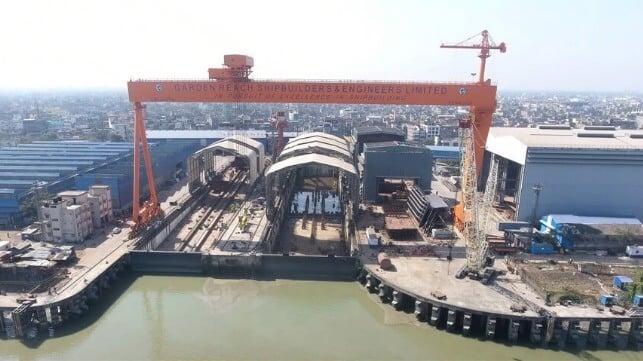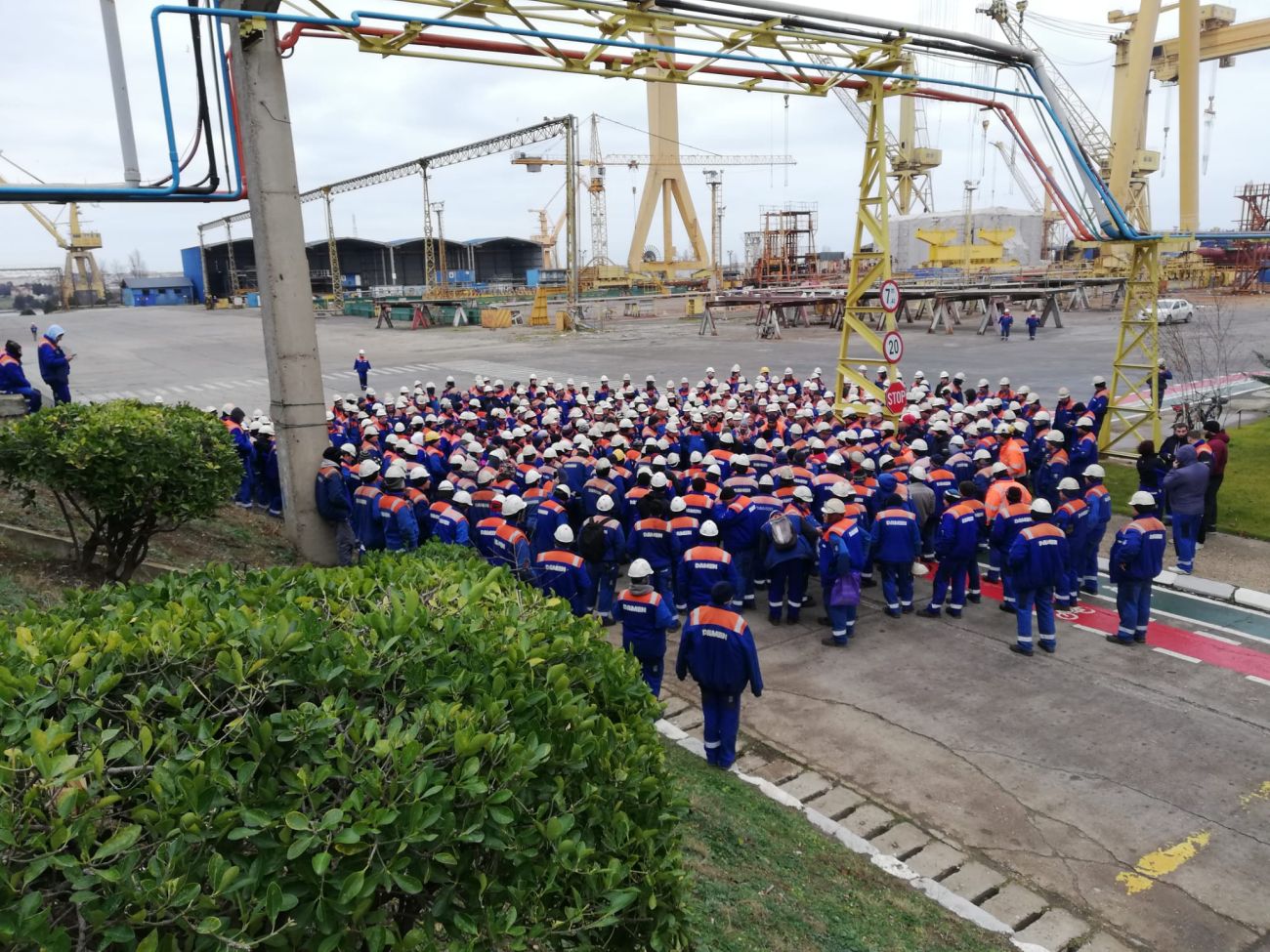Russia's Arctic Gas Trade: The Role Of European Shipyards

Table of Contents
Russia's Arctic region holds vast reserves of natural gas, fueling a rapidly expanding Arctic gas trade. This booming industry, however, relies heavily on specialized ice-class vessels capable of navigating the challenging Arctic environment. European shipyards play a crucial role in constructing and maintaining these vital ships, shaping the future of Russia's Arctic energy ambitions and creating complex geopolitical dynamics. This article explores the intricate relationship between Russia's Arctic gas trade and the expertise provided by European shipyards.
The Demand for Ice-Class Vessels in Russia's Arctic Gas Trade
Navigating the Arctic Challenges
The unique challenges of Arctic shipping necessitate specialized ice-class vessels. These challenges include:
- Extreme Ice Conditions: Thick ice floes and unpredictable ice formations demand vessels with robust hulls and powerful propulsion systems. The need for icebreakers to escort LNG carriers through challenging ice is paramount.
- Severe Temperatures: Sub-zero temperatures impact vessel operations, requiring specialized materials and design considerations to prevent equipment failure and ensure crew safety.
- Remote Locations: The remoteness of Arctic shipping routes necessitates vessels with enhanced self-sufficiency, including extended fuel capacity and advanced onboard maintenance capabilities.
- Navigational Difficulties: The lack of extensive navigational aids and the presence of unpredictable weather patterns further complicate Arctic shipping, demanding advanced navigation technology and experienced crews.
This translates into a significantly increased demand for:
- LNG Carriers: Specialized vessels designed for transporting liquefied natural gas (LNG) safely and efficiently through icy waters.
- Icebreakers: Powerful vessels designed to break through ice, often escorting LNG carriers and other vessels through particularly challenging routes.
- Support Vessels: A range of vessels providing support services such as refueling, maintenance, and crew changes.
- Enhanced Maintenance and Repair: The harsh Arctic conditions demand robust maintenance and repair capabilities, both onboard and in specialized Arctic ports.
Key Players in the Arctic Gas Trade
The Yamal LNG project in the Yamal Peninsula exemplifies the dependence on ice-class vessels. This massive project, a significant contributor to Russia's Arctic gas exports, relies heavily on specialized ice-class LNG carriers built by European shipyards to transport LNG to global markets. The role of nuclear-powered and other icebreakers in escorting these LNG carriers is crucial for ensuring safe and timely deliveries. Future Arctic gas projects will similarly rely on a robust fleet of ice-class vessels, driving further demand and impacting the shipbuilding industry.
The European Shipbuilding Industry's Contribution
Technological Expertise and Shipyard Capabilities
European shipyards possess the advanced technology and shipbuilding expertise needed to construct ice-class vessels. Finnish and Norwegian shipyards, in particular, have developed a strong reputation for building ice-class vessels, utilizing:
- Advanced Hull Designs: Employing specialized hull shapes and materials optimized for icebreaking and resistance to extreme cold.
- Powerful Propulsion Systems: Integrating powerful engines and propulsion systems capable of navigating challenging ice conditions.
- Specialized Materials: Utilizing high-strength steels and other advanced materials capable of withstanding the extreme pressure and temperatures of the Arctic environment.
- Sophisticated Navigation and Communication Systems: Equipping vessels with state-of-the-art navigational aids and communication systems for safe and efficient operations in remote areas.
These shipyards' design and engineering capabilities are critical to constructing these complex and specialized vessels.
Economic and Geopolitical Implications
This collaboration between European shipyards and Russia has significant economic and geopolitical implications:
- Economic Benefits for European Shipyards: The construction and maintenance of ice-class vessels creates numerous jobs and contributes significantly to the economies of European shipbuilding nations.
- Economic Interdependence: The relationship fosters economic interdependence between European nations and Russia, creating complex trade relationships.
- Geopolitical Tensions and Sanctions: Geopolitical tensions and sanctions can significantly impact this collaboration, creating uncertainty and potential disruptions to the Arctic gas trade. The ongoing political climate influences project viability and future contracts.
Future Trends and Challenges
Technological Advancements in Arctic Shipping
Future advancements in ice-class vessel design and technology include:
- Autonomous Vessels: The development of autonomous or remotely operated vessels could improve efficiency and safety in Arctic shipping.
- New Propulsion Systems: The exploration of alternative propulsion systems, such as LNG-fueled engines and hybrid systems, aims to reduce the environmental impact of Arctic shipping.
- Increased Cooperation: Further cooperation between European and Russian companies on research and development is crucial to advance ice-class vessel technology.
These advancements offer the potential to make Arctic shipping more efficient, safer, and environmentally friendly.
Sustainability and Environmental Concerns
The environmental impact of Arctic gas extraction and shipping is a major concern. Key challenges include:
- Reducing Carbon Footprint: Implementing measures to mitigate the carbon footprint of Arctic shipping, such as using cleaner fuels and improving vessel efficiency.
- Environmental Regulations: Compliance with stringent environmental regulations designed to protect the fragile Arctic ecosystem.
- Sustainable Shipbuilding Practices: Adopting sustainable shipbuilding practices that minimize the environmental impact of vessel construction and operation.
Conclusion:
Russia's Arctic gas trade is inextricably linked to the capabilities of European shipyards, which provide the specialized ice-class vessels crucial for navigating the challenging Arctic environment. This collaboration presents significant economic opportunities for European shipbuilders while highlighting the complex geopolitical landscape surrounding Arctic energy development. As the demand for Arctic gas continues to grow, the future of this industry hinges on continued technological advancements in ice-class vessel design, alongside a focus on sustainable practices to minimize environmental impact. To stay informed on the latest developments in this dynamic sector, continue researching the intricacies of Russia's Arctic gas trade and its dependence on European shipbuilding expertise.

Featured Posts
-
 Shedeur Sanders Nfl Draft Stock Soars Analyzing The Hype And The Giants Potential Interest
Apr 26, 2025
Shedeur Sanders Nfl Draft Stock Soars Analyzing The Hype And The Giants Potential Interest
Apr 26, 2025 -
 Is Gavin Newsoms Political Strategy Backfiring
Apr 26, 2025
Is Gavin Newsoms Political Strategy Backfiring
Apr 26, 2025 -
 The Impact Of Ai On Design A Conversation With Microsofts Design Leader
Apr 26, 2025
The Impact Of Ai On Design A Conversation With Microsofts Design Leader
Apr 26, 2025 -
 Sindicalistul Naval Din Mangalia Solicita Interventia Ambasadei Olandei
Apr 26, 2025
Sindicalistul Naval Din Mangalia Solicita Interventia Ambasadei Olandei
Apr 26, 2025 -
 Shorter Lead Times For Saab Defense Contracts Ceo Update
Apr 26, 2025
Shorter Lead Times For Saab Defense Contracts Ceo Update
Apr 26, 2025
Latest Posts
-
 Celebrity Style Evolution Ariana Grandes Professional Hair And Tattoo Makeover
Apr 27, 2025
Celebrity Style Evolution Ariana Grandes Professional Hair And Tattoo Makeover
Apr 27, 2025 -
 The Professionals Behind Ariana Grandes Dramatic Hair And Tattoo Change
Apr 27, 2025
The Professionals Behind Ariana Grandes Dramatic Hair And Tattoo Change
Apr 27, 2025 -
 Ariana Grandes Hair And Tattoo Transformation Professional Insights Into Celebrity Styling
Apr 27, 2025
Ariana Grandes Hair And Tattoo Transformation Professional Insights Into Celebrity Styling
Apr 27, 2025 -
 Understanding Ariana Grandes Style Evolution The Role Of Professional Hair And Tattoo Experts
Apr 27, 2025
Understanding Ariana Grandes Style Evolution The Role Of Professional Hair And Tattoo Experts
Apr 27, 2025 -
 Ariana Grandes Bold New Look Exploring The Professionalism Behind Her Hair And Tattoo Choices
Apr 27, 2025
Ariana Grandes Bold New Look Exploring The Professionalism Behind Her Hair And Tattoo Choices
Apr 27, 2025
